Can I Charge Solar Lights Indoors? A Comprehensive Guide to Keeping Your Solar Lights Powered
Solar lights are a popular choice for illuminating outdoor spaces, offering an eco-friendly and cost-effective way to enhance gardens, pathways, and patios. However, many users wonder, can I charge solar lights indoors when sunlight is limited, such as during cloudy days or in winter months? This guide explores the feasibility of charging solar lights indoors, the best methods to do so, and practical tips to ensure your solar powered light for garden and solar spot lights remain functional year-round. We’ll dive into the science, debunk myths, and provide unique solutions to keep your outdoor lighting shining brightly.
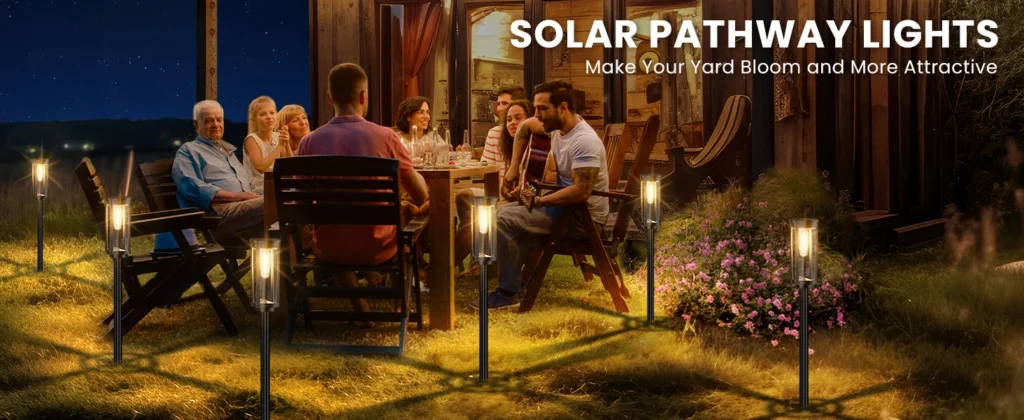
Understanding How Solar Lights Work
To answer whether you can charge solar lights indoors, it’s essential to understand how solar lights function. Solar lights rely on photovoltaic (PV) panels to convert sunlight into electricity, which is stored in rechargeable batteries (typically NiMH or lithium-ion). These batteries power the LED lights during the night. The efficiency of charging depends on the intensity and spectrum of light hitting the PV panel. While sunlight is the optimal source, other light sources can sometimes contribute, albeit less effectively.
Solar powered lights for garden and solar spot lights are designed to maximize sunlight exposure, often placed in open areas with direct access to the sun. However, in regions with limited daylight or during inclement weather, users may seek alternative charging methods, prompting the question of indoor charging.
Can I Charge Solar Lights Indoors with Artificial Light?
Yes, you can charge solar lights indoors using artificial light, but the effectiveness depends on the type and intensity of the light source. Here’s a breakdown of how different indoor lighting options perform:
Incandescent and Halogen Bulbs
Traditional incandescent or halogen bulbs emit light in a spectrum somewhat similar to sunlight, but their intensity is typically too low to charge solar lights efficiently. For example, a 60-watt incandescent bulb produces about 800 lumens, far less than the 100,000 lumens per square meter of direct sunlight. Placing a solar powered light for garden near such a bulb may result in a trickle charge, but it’s unlikely to fully charge the battery, even after several hours.
LED Lights
Modern LED bulbs are energy-efficient but often lack the broad spectrum needed to activate PV cells effectively. Most LEDs emit light in specific wavelengths (e.g., cool white or warm white), which may not align with the solar panel’s sensitivity. However, high-intensity LED grow lights, designed to mimic sunlight for plants, can sometimes charge solar spot lights to a limited extent. For instance, a 1000-watt equivalent LED grow light placed close to the panel (within 6 inches) may provide a partial charge.
Fluorescent Lights
Fluorescent lights, including compact fluorescent lamps (CFLs), emit a broader spectrum than LEDs but still fall short of sunlight’s intensity. They can generate a small charge for solar powered lights for garden, especially if the light is placed directly under a high-output fluorescent tube for several hours. However, the charging rate is slow, often requiring 10-12 hours to achieve a minimal charge.
Sunlight Through a Window
Placing solar lights near a window to capture filtered sunlight is a common indoor charging method. However, glass windows block a significant portion of UV light, which PV panels rely on for efficient charging. A south-facing window (in the Northern Hemisphere) with direct sunlight may provide 50-70% of outdoor charging efficiency, depending on the glass type and weather conditions. For solar spot lights with larger panels, this method can be moderately effective, especially in sunny regions like Southern California.
Challenges of Charging Solar Lights Indoors
While it’s possible to charge solar lights indoors, several challenges limit the effectiveness:
- Low Light Intensity: Most indoor light sources, even high-powered ones, produce significantly less intensity than natural sunlight, leading to slow or incomplete charging.
- Spectral Mismatch: Solar panels are optimized for the full spectrum of sunlight, particularly UV and visible wavelengths. Artificial lights often lack these wavelengths, reducing charging efficiency.
- Battery Limitations: Repeated partial charging from weak light sources can degrade battery performance over time, especially in low-quality solar powered lights for garden.
- Heat Concerns: Placing solar lights too close to high-intensity bulbs (e.g., halogen or grow lights) can overheat the panel or battery, potentially causing damage.
For solar spot lights used to highlight garden features, these challenges can be particularly frustrating, as their higher power requirements demand efficient charging.
Alternative Methods to Charge Solar Lights Indoors
If indoor lighting proves insufficient, there are innovative alternatives to keep your solar lights powered:
USB Charging Adapters
Some modern solar powered lights for garden and solar spot lights come with USB charging ports, allowing you to charge the battery directly using a USB cable and a standard power adapter. This is ideal for cloudy days or indoor storage during winter. Brands like Bitpott offer models with dual charging capabilities (solar and USB), making them versatile for year-round use. Check your light’s manual to confirm USB compatibility, and use a 5V/1A charger to avoid overcharging.
Solar Panel Extension Cables
For solar spot lights with detachable panels, consider using a solar panel extension cable to place the panel near a sunny window while keeping the light itself indoors or in a shaded area. This method maximizes sunlight exposure without relying on artificial light. Cables ranging from 10 to 20 feet are widely available and can be a game-changer for urban gardeners with limited outdoor space.
Portable Solar Chargers
Invest in a portable solar charger, such as a foldable solar panel designed for camping. These chargers can be placed on a windowsill or balcony to capture sunlight and charge your solar powered light for garden via a USB or direct connection. This is particularly useful in apartments or homes with limited outdoor access.
Battery Replacement
If charging indoors isn’t feasible, consider replacing the rechargeable batteries in your solar lights. Most solar spot lights use standard AA or AAA NiMH batteries, which can be charged separately using a compatible battery charger. This ensures your lights remain operational even during extended periods of low sunlight.
Tips to Optimize Indoor Charging
To maximize the effectiveness of charging solar lights indoors, follow these practical tips:
Use High-Intensity Grow Lights
If you opt for artificial light, choose a full-spectrum LED grow light with at least 1000 watts of equivalent power. Position the solar powered light for garden within 6-12 inches of the light source for 8-10 hours to achieve a partial charge. Rotate the panel periodically to ensure even exposure.
Clean the Solar Panel
Dirt, dust, or smudges on the solar panel can reduce charging efficiency. Wipe the panel with a soft cloth and distilled water before charging, especially for solar spot lights exposed to outdoor debris. Avoid abrasive cleaners that could scratch the panel.
Maximize Window Exposure
Place your solar powered light for garden on a south-facing windowsill (in the Northern Hemisphere) during peak sunlight hours (10 AM to 2 PM). Remove any curtains or blinds to reduce light filtering, and consider using a reflective surface (e.g., a mirror) to direct more light onto the panel.
Monitor Battery Health
Over time, batteries in solar spot lights can lose their capacity to hold a charge. Test the battery with a multimeter to ensure it’s functioning properly, and replace it if the voltage is consistently low (e.g., below 1.2V for NiMH batteries).
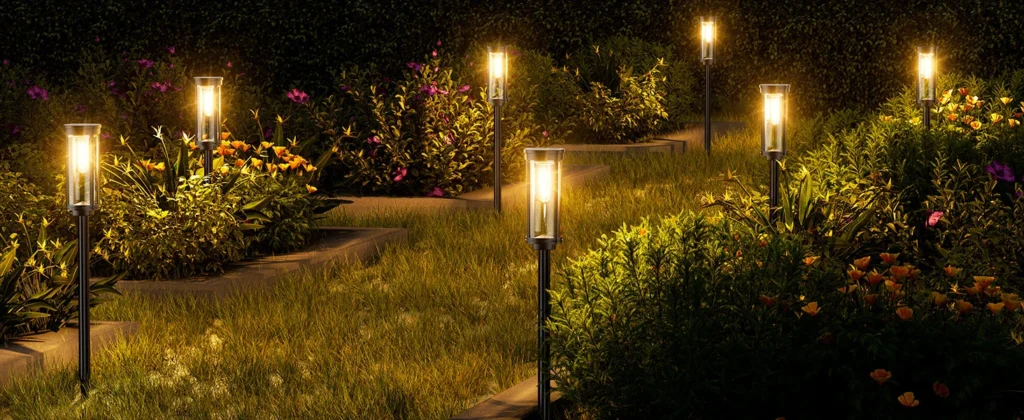
Unique Solutions for Indoor Charging
To set this guide apart, here are some innovative ideas not commonly found in other resources:
DIY Solar Charging Station
Create a DIY indoor charging station using a high-powered LED grow light and a reflective enclosure (e.g., a box lined with aluminum foil). Place multiple solar powered lights for garden inside the enclosure to charge simultaneously, mimicking outdoor sunlight conditions. This is ideal for bulk charging during winter or in cloudy regions like Seattle.
Smart Light Sensors
Some advanced solar spot lights feature adjustable light sensors that can be fine-tuned to work with artificial light sources. Experiment with sensor settings to allow the light to charge under grow lights without triggering the “night mode” prematurely. This can be particularly useful for indoor setups.
Solar Light Storage Strategy
If you plan to store solar powered lights for garden indoors for an extended period, remove the batteries to prevent corrosion and store the lights in a dry, cool place. Charge the batteries separately every 2-3 months to maintain their health, ensuring your lights are ready for use when reinstalled.
When to Rely on Outdoor Charging
While you can charge solar lights indoors, outdoor charging remains the most efficient method. In regions with ample sunlight, such as Phoenix, AZ, solar spot lights can fully charge in 6-8 hours of direct sunlight, providing 8-12 hours of illumination. If indoor charging is a temporary solution, prioritize returning the lights to their outdoor setup as soon as weather permits to maintain optimal performance.
Choosing the Right Solar Lights for Flexible Charging
When purchasing solar powered lights for garden or solar spot lights, consider models designed for versatility. Look for features like:
- Dual Charging Options: Lights with USB charging ports, such as those from Bitpott, offer flexibility for indoor and outdoor use.
- High-Capacity Batteries: Lights with larger batteries (e.g., 2200mAh) can store more energy, reducing the need for frequent charging.
- IP65 Waterproof Rating: Ensures durability in outdoor conditions, reducing the need to bring lights indoors during rain.
Environmental and Practical Considerations
Charging solar lights indoors can be a sustainable solution in areas with limited sunlight, such as northern Europe or Canada during winter. However, relying on artificial lights for charging may increase energy consumption, partially offsetting the eco-friendly benefits of solar lighting. Balance indoor charging with outdoor placement whenever possible to maximize efficiency and minimize environmental impact.
Conclusion
So, can I charge solar lights indoors? The answer is yes, but with caveats. Artificial lights like LED grow lights or sunlight through a window can provide a partial charge, but they’re less efficient than natural sunlight. For solar powered lights for garden and solar spot lights, consider alternative methods like USB charging, portable solar chargers, or battery replacement to maintain performance during low-light periods. By optimizing your charging setup and choosing high-quality lights, you can ensure your outdoor spaces remain beautifully illuminated, no matter the weather or season.

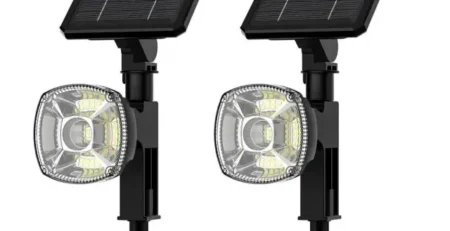
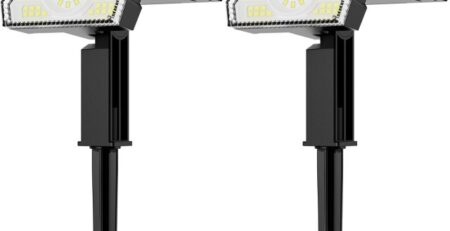

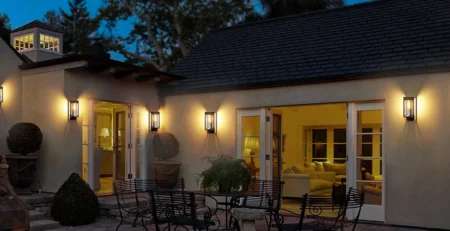

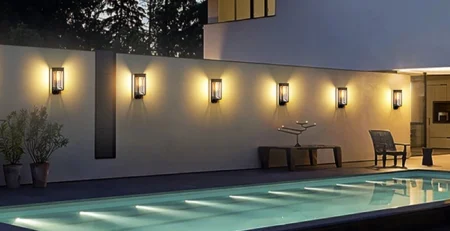
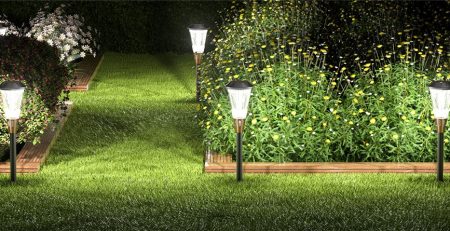

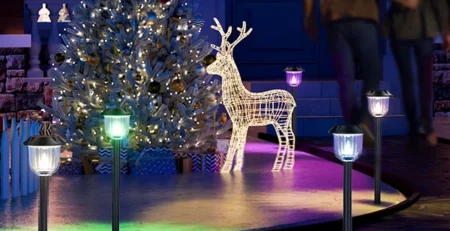
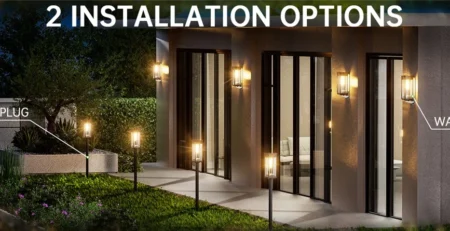
Leave a Reply